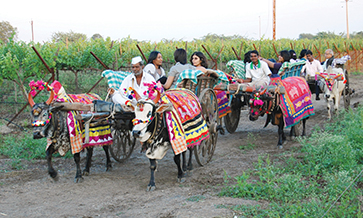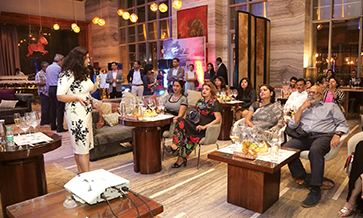Israel’s Antiquities Authority has uncovered a huge 1,500-year-old wine production complex in Yavne, central Israel, capable of producing two million litres of wine a year.
Yavne was a world wine powerhouse about 1,500 years ago, and this archaeological find from the Byzantine period is the largest known wine complex in the world from this period.
The 2-year excavation project has yielded five magnificent wine presses, warehouses for aging and marketing the wine, kilns for firing the clay amphorae in which the wine was stored, tens of thousands of fragments and intact earthen amphorae (jars), well planned access between the facilities, and more.
Drinking wine was very common in ancient times, for children and adults alike. Since water was not always sterile, or even tasty, wine was also used as a kind of “concentrate” to improve the taste, or as a substitute for drinking water.
Each of the exposed wine presses covered an area of about 225 square metres. Around the treading floor, where the grapes were crushed barefoot to extract the liquid, compartments were built for fermenting the wine, and next to them two huge octagonal shaped vats for collecting the wine.
Dr. Elie Haddad, Mr Liat Nadav-Ziv and Dr. Jon Seligman, the directors of the excavation on behalf of the Israel Antiquities Authority noted, “We were surprised to discover a sophisticated factory here, which was used to produce wine in commercial quantities.”
Decorative niches in the shape of a conch, which adorned the wine presses, indicate the great wealth of the factory owners. A calculation of the production capacity of these wine presses shows that approximately 2 million litres of wine were marketed every year – and the whole process was conducted manually.
Between the wine presses, four large warehouses were discovered, which formed the winery of the factory. The wine is aged in elongated amphorae, known as ‘Gaza jars’, many of which were discovered intact at the site in large kilns.
“Gaza and Ashkelon wines were considered quality brands of the ancient world, whose reputation has spread far and wide, a bit like Jaffa oranges denote their origin and quality today from Israel,” the archaeologists explained.
Excavations in Yavne have revealed rare and even older wine presses from the Persian period, about 2,300 years ago.
“It is said that after the destruction of Jerusalem, the Jewish leadership migrated to Yavne, and that the sages of Yavne lived in a vineyard and studied the Torah. The excavation shows a continuum of existence of the wine industry at the site over many centuries,” say the archaeologists.
Even more recently, archaeologists have uncovered what they believe is the oldest industrial wine press in northern Mesopotamia. Dating back more than 2,700 years, it is thought to have come from a time when there was a rise in wine demand among the ruling imperial elites of Assyria.
Assyria, which was reportedly one of the world’s earliest empires, was located in the northern part of Mesopotamia: most of modern-day Iraq, as well as parts of Iran, Kuwait, Syria and Turkey.
The press was unearthed at the archaeological site of Khanis, near the northern Iraqi province of Dohuk. Assyrian scripture, which was reportedly used in various ceremonial practices among the rich, has previously indicated a historical demand for wine among the upper classes of society.
The full discovery shows 14 installations carved into mountain rocks, including square-shaped basins used to press grapes and lower circular basins where the juice collected. After the wine was fermented, it was collected in jars before being sold.













